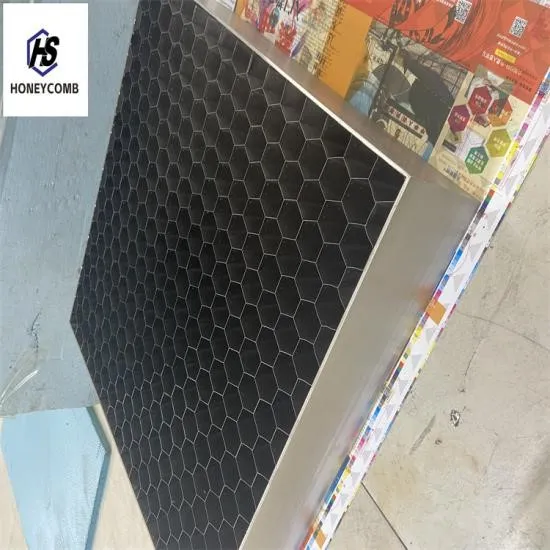
- Afrikaans
- Albanian
- Amharic
- Arabic
- Armenian
- Azerbaijani
- Basque
- Belarusian
- Bengali
- Bosnian
- Bulgarian
- Catalan
- Cebuano
- China
- China (Taiwan)
- Corsican
- Croatian
- Czech
- Danish
- Dutch
- English
- Esperanto
- Estonian
- Finnish
- French
- Frisian
- Galician
- Georgian
- German
- Greek
- Gujarati
- Haitian Creole
- hausa
- hawaiian
- Hebrew
- Hindi
- Miao
- Indonesian
- Italian
- Japanese
- Javanese
- Malay
- Persian
- Portuguese
- Punjabi
- Russian
- Spanish
- Swahili
- Telugu
- Vietnamese

Feb . 13, 2025 00:59
Back to list
honeycomb vent panels
The honeycomb flow straightener, an essential component in many industrial applications, has significantly transformed how fluid mechanics are manipulated for optimal performance across various sectors. With its unique design reminiscent of a honeycomb pattern, this tool provides an unmatched ability to streamline fluid flow, making it indispensable in industries where precision and efficiency are paramount.
The manufacturing process of honeycomb flow straighteners demands precision and uses materials that can withstand different industrial conditions. Typically made from durable materials such as aluminum and plastic composites, these devices must offer resistance to environmental stresses while maintaining structural integrity. The manufacturing includes cutting-edge techniques like laser cutting to ensure each honeycomb cell is perfectly shaped, thus maximizing the flow rectification capabilities of the device. Experts in fluid dynamics and engineering consistently affirm that the application of honeycomb flow straighteners transcends mere performance enhancement. They emphasize that by stabilizing the flow, there is an inherent boost in the longevity and reliability of measuring instruments and mechanical components exposed to the fluid streams. Consequently, this proactive approach not only reduces maintenance costs but also extends the lifespan of the equipment involved, offering a sustainable solution for industrial operations. Trust in honeycomb flow straighteners is built on decades of practical application and innovation-driven refinement. Industry leaders endorse these devices not just for their performance but also for their contribution to achieving precision and reducing operational costs. Continuous research and development efforts keep pushing the boundaries, seeking improvements that address evolving industry needs, thereby reinforcing the authoritative position of honeycomb flow straighteners in modern fluid mechanics. In summary, the honeycomb flow straightener is a cornerstone of precision fluid management across various industries. Its ability to convert turbulent flows into streamlined, laminar trails brings about enhanced efficiency, accuracy, and reliability, underscoring its indispensable place in contemporary engineering practices.


The manufacturing process of honeycomb flow straighteners demands precision and uses materials that can withstand different industrial conditions. Typically made from durable materials such as aluminum and plastic composites, these devices must offer resistance to environmental stresses while maintaining structural integrity. The manufacturing includes cutting-edge techniques like laser cutting to ensure each honeycomb cell is perfectly shaped, thus maximizing the flow rectification capabilities of the device. Experts in fluid dynamics and engineering consistently affirm that the application of honeycomb flow straighteners transcends mere performance enhancement. They emphasize that by stabilizing the flow, there is an inherent boost in the longevity and reliability of measuring instruments and mechanical components exposed to the fluid streams. Consequently, this proactive approach not only reduces maintenance costs but also extends the lifespan of the equipment involved, offering a sustainable solution for industrial operations. Trust in honeycomb flow straighteners is built on decades of practical application and innovation-driven refinement. Industry leaders endorse these devices not just for their performance but also for their contribution to achieving precision and reducing operational costs. Continuous research and development efforts keep pushing the boundaries, seeking improvements that address evolving industry needs, thereby reinforcing the authoritative position of honeycomb flow straighteners in modern fluid mechanics. In summary, the honeycomb flow straightener is a cornerstone of precision fluid management across various industries. Its ability to convert turbulent flows into streamlined, laminar trails brings about enhanced efficiency, accuracy, and reliability, underscoring its indispensable place in contemporary engineering practices.
Prev:
Next:
Products categories
Latest news
-
Why Vented Aluminum Honeycomb Is Leading the Way in Shielding and Ventilation SolutionsNewsJul.18,2025
-
Why Stainless Steel Honeycomb Panel is the Ultimate Choice for High-Tech Shielding and ProtectionNewsJul.18,2025
-
Why Honeycomb Strips Are Revolutionizing High-Speed Sealing SolutionsNewsJul.18,2025
-
Shielded Glass Innovation Powers the Future of Electromagnetic ProtectionNewsJul.18,2025
-
Precision Starts Here: Revolutionizing Airflow Control with Honeycomb Wind Tunnel SolutionsNewsJul.18,2025
-
Elevate Industrial Performance with Precision-Engineered Steel Honeycomb Core SolutionsNewsJul.18,2025
-
Vented Aluminum Honeycomb: A Smart Shield for Airflow and EMI ControlNewsJul.11,2025















